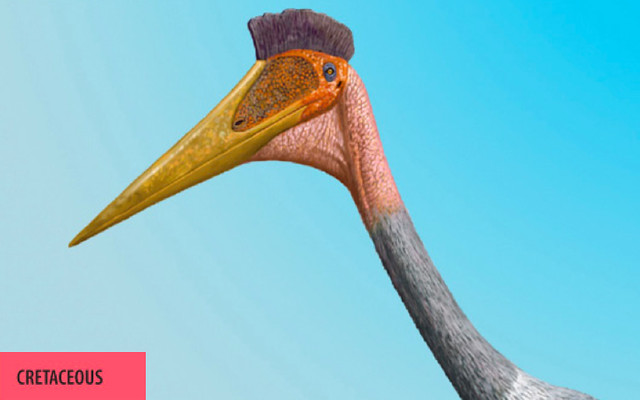Quetzalcoatlus /kɛtsəlkoʊˈætləs/ was a pterodactyloid pterosaur known from the Late Cretaceous of North America (Maastrichtian stage) and one of the largest known flying animals of all time. It was a member of the Azhdarchidae, a family of advanced toothless pterosaurs with unusually long, stiffened necks. Its name comes from the Mesoamericanfeathered serpent god Quetzalcoatl.
When it was first discovered, scientists estimated that the largestQuetzalcoatlus fossils came from an individual with a wingspan as large as 15.9 meters (52 feet), choosing the middle of three extrapolations from the proportions of other pterosaurs that gave an estimate of 11, 15.5 and 21 meters respectively (36 feet, 50.85 feet, 68.9 feet). In 1981, further study lowered these estimates to 11–12 meters (36–39 ft).[1] More recent estimates based on greater knowledge of azhdarchid proportions place its wingspan at 10–11 meters (33–36 ft).[2]
Mass estimates for giant azhdarchids are extremely problematic because no existing species share a similar size or body plan, and in consequence published results vary widely.[3] While some studies have historically found extremely low weight estimates for Quetzalcoatlus, as low as 70 kilograms (150 lb) for a 10-meter (32-foot-10-inch) individual, a majority of estimates published since the 2000s have been higher, around 200–250 kilograms (440–550 lb).[4][5]
(From Wikipedia, February 2015)




